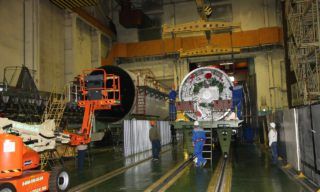Chinese scientists have published their debut research paper on lunar regolith samples, the first ever collected on the back side of the Moon—despite the fact that less than three months have passed since the Chang’e-6 probe delivered them to Earth. Contrary to the voices of some skeptics, it was confirmed that there are serious differences between them and the soil collected on its “front” surface.
The world’s first country to deliver to Earth samples from the hidden side of the Moon is building on its tremendous scientific success. By joining together, scientists from the China Lunar Research and Space Engineering Center, the National Astronomical Observatory of the Chinese Academy of Sciences, and the Beijing Institute of Spacecraft System Engineering have already shared the results of their study with the world.
It turned out that while the side of the Moon facing our planet is composed mainly of basalts (volcanic rocks), the side facing into space has a huge amount of different kinds of impurities – including breccia, agglutinate, leucocrates, feldspar, and glass. However, this is not so unexpected taking into account a huge number of craters surrounding the landing site of Chang’e-6. These inclusions were brought to the Earth’s satellite by numerous meteorites.
However, this is where the interesting details only began. Another thing became clear quite quickly: the soil collected by the newest research probe has a much lower density than the regolith delivered by Chang’e-5. The surface of the Moon’s back side is much more friable, porous, and in general worse structured.
In addition, the rocks found an unexpectedly high content of the mineral plagioclase. But the share of olivine – on the contrary, was much less than on the front side of the cosmic body. A completely different concentration was obtained for such trace elements as uranium, potassium, and thorium – to which scientists have been paying close attention since the Apollo program. In doing so, the two kilograms of soil pushed the whole of lunar science forward, if not overturned, then with tremendous force.
“These local basalts document the history of volcanism on the back side of the Moon, while the non-basalt fragments may provide critical insights into the lunar highland crust, meteorite impact melts, and possibly the true depth of the lunar mantle,” the geophysicists summarized. Nevertheless, even these conclusions are only the tip of the iceberg. Virtually none of the scientists seriously doubt that the samples collected by Chang’e-6 will be the source of many more significant discoveries – important in the context of the evolution of the entire solar system.



















